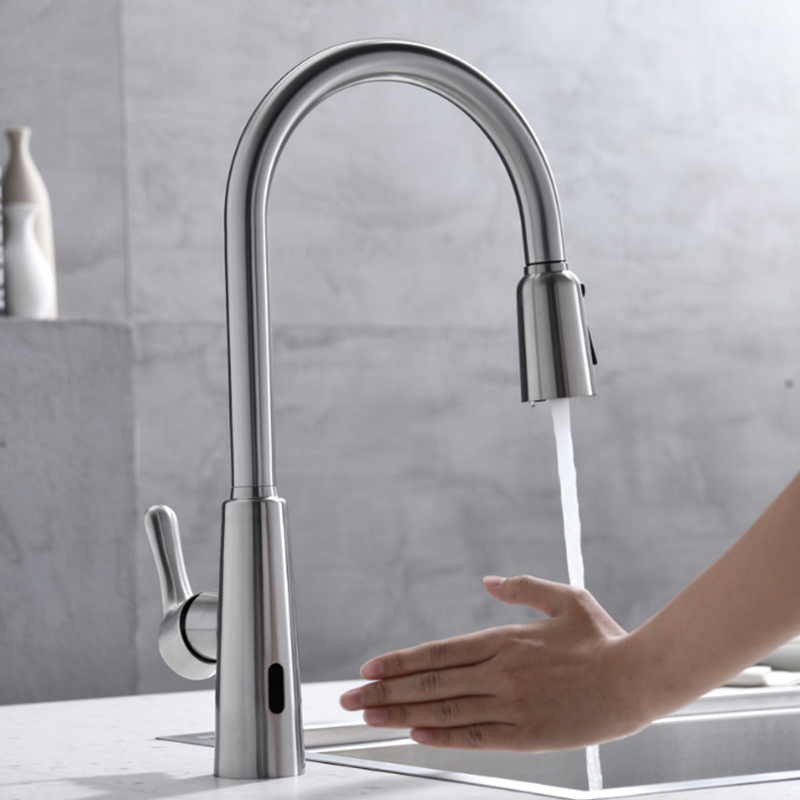
Privacy statement: Your privacy is very important to Us. Our company promises not to disclose your personal information to any external company with out your explicit permission.
There are some big differences between a touch faucet and a touchless faucet, though. A touch kitchen faucet, also called a "touch-sensitive faucet," turns on when a user touches it. This touch can occur anywhere on the faucet, including the handle or spout, and it can be done with a hand, wrist, forearm, etc., which is convenient when your hands are dirty. The on/off features are activated through the same small electrical charge of the human body that makes a touch screen work.
A touchless faucet, also called a "sensor faucet" or "hands-free faucet," turns on when a motion sensor recognizes a hand or other object in front of it, and it turns off when the object is removed. While both touch and touchless kitchen faucets can keep kitchen faucet handles clean and help prevent the spread of bacteria, the fully hands-free nature of a touchless faucet does so more effectively.
How a Touch Kitchen Faucet Works
Touch faucets rely on a technology called "captive sensing" that senses the small charge of the human body. This charge is called "capacitance," which is equal to around 100 to 200 picofarads. Touch faucets are programmed to detect capacitance changes within this range. They do this through sensors built into the handle and the spout.
These don't just sense electrical charges to the sensors themselves but any conductive material connected to the sensors, including the rest of the faucet (insulation at the base of the faucet prevents the sink from operating as a conductor). A quick touch will turn on the faucet when it is turned off. Another touch will turn it off when it is on, and many touch faucets will also turn off automatically after a set period of time.
Many people worry that cleaning a touch faucet, using a pull-down faucet accessory, or even adjusting the water temperature with the handle will result in it turning on and off over and over, but only a quick touch will turn the faucet on or off. A long, steady touch will not trigger the solenoid valve.
How a Touchless Faucet Works
A touchless faucet also uses a sensor, but in this case, the sensor detects motion rather than the body's electrical current. The sensor does this with either infrared light or ultrasonic sensor, usually placed at the front or side of the faucet body, though some styles hide the sensor on the back of the spout.
With infrared light, the faucet will turn on when the infrared light bounces off your hand (or an object) and back into the detector, whereas an ultrasonic field sensor will turn on when it is triggered by your hand movement disrupting the sensor. In both versions, the water will stop flowing when the sensor returns to its default state.



Privacy statement: Your privacy is very important to Us. Our company promises not to disclose your personal information to any external company with out your explicit permission.

Fill in more information so that we can get in touch with you faster
Privacy statement: Your privacy is very important to Us. Our company promises not to disclose your personal information to any external company with out your explicit permission.